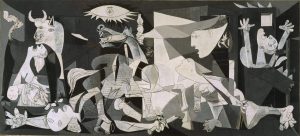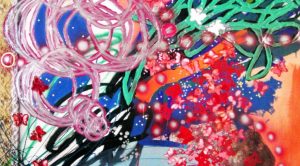Contemporary art as a cultural phenomenon has relatively recently become the subject of theoretical research, in which an attempt is made to comprehend and embrace the disparate trends in art of recent decades with a consistent concept. This phenomenon continues to pose questions for researchers, without consideration of which it is difficult to analyze it. The main one is the definition of the concept of “contemporary art”. Closely related to it is another question that immediately arises: what is the time continuum or range of temporal frameworks of contemporary art? What is the conceptual and chronological difference between modern, contemporary, contemporary (latest) art?
It is equally important in the scientific context to understand the characteristic features of “contemporary art”, since the use of the term began much earlier than the time came for confusion in the definitions of its meaning, essence and boundaries.

The reflections and comments of critics, curators, art historians and artists on the topic of contemporary art are still an attempt to identify it by listing tools, presentation methods, forms of implementation, etc. There is no universal definition.
The term “contemporary art” is vague, applied both to the art of the last decades and to the phenomena of art of the second half of the 19th century. The difficulty of its interpretation is mainly due to the fact that the process of formation of contemporary art as a direction has not been completed, therefore, we can only talk about the forms, methods, details and structural elements of the “non-obvious non-whole”. Accordingly, the incompleteness of the process does not allow comprehending the main features of contemporary art, which would become its universal and general definition.
For almost the entire 20th century, the concept of “contemporary art” was never formalized in a dictionary way, and together with reference to a certain period, it was used whenever new art content appeared. It is in this way that contemporary art has maintained a tendency to crawl along the chronological axis.
As the analysis of the most common views on contemporary art shows, the most vulnerable point in the arguments of scientists is the distinction between “Contemporary Art” proper and “Modern Art”. Since the ontological crisis in the interpretation of the term is associated mainly with the difficulties of its translation from the original language, both terms in colloquial speech mean the same thing, that is, “contemporary art”.

Today, we can definitely say that the term Contemporary Art has replaced Modern Art [8], and the difference between modern and contemporary art is discussed in connection with the decline of the era of modernism. It should be noted that until now, experts disagree about exactly when this happened. Here we can refer to a number of examples given in the Dictionary of Modern and Contemporary Art, which will indicate a certain confusion about the difference between one term and another. For example, the Pompidou Center positions its collections within the framework of modern and contemporary art as two separate areas. The art historian Robert Atkins, in Art Speak: A Guide to Contemporary Ideas, Trends and Themes (1990), proposed the use of the term “modern art” for the post-World War II period. Jonathan Law, editor of European Culture: A Modern Travel Companion (1993), fully agrees with this view. His book on this topic “included only those personalities who appeared or significantly increased their achievements after 1945.” The Museum of Modern Art in Los Angeles is focused on a similar time frame, starting in 1940. However, Christie’s auction defines “modern art” as beginning in the 1970s. The New Museum of Modern Art in New York is limited to works from the last ten years. Such an interpretation of “contemporary art” means that such a museum will never be able to gather permanent collections in the traditional sense of the term, since works will quickly lose the status of “modernity”. Here the point is not so much in the translation of the concept from English into other languages, but in the fundamental difference between the understanding of their chronological conditionality in different countries.
So, according to researchers, the reckoning of “modern art” should start from 1945, when the mediatized art scene moves from Paris to New York. Considering this issue from the point of view of the evolution of art, the most logical turning point is the emergence of conceptual art in the early 1960s. However, the crisis point in the development of modernism was the conflict between abstract and figurative art, which continued to apply traditional methods of painting and sculpture. In addition, almost at the same time there is a transition from modernism to postmodernism. Another difference is that modern art is commonly referred to as “modernism”.
